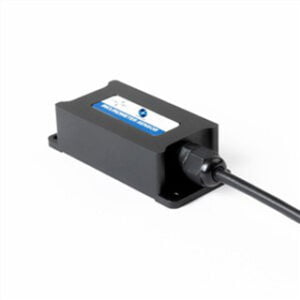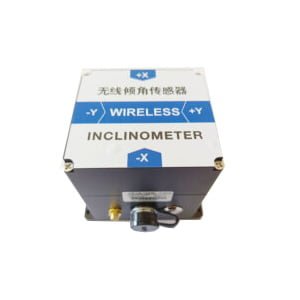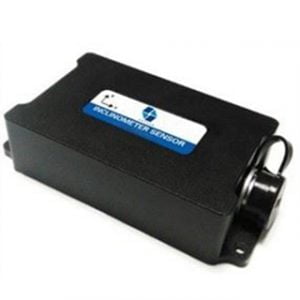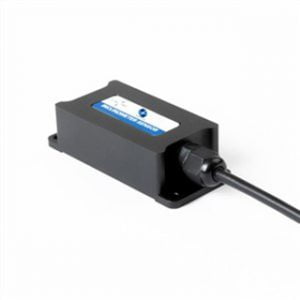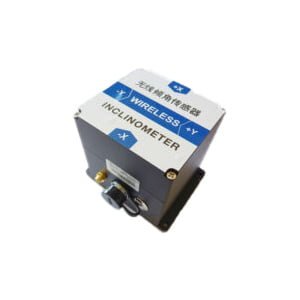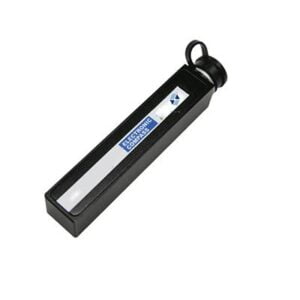An indispensable measurement tool in life
Tilt sensor is a high-precision instrument that can accurately measure the tilt angle of an object relative to the plane. This instrument is widely used in various fields, including engineering, construction, geophysics, etc. Whether it is a large bridge project or a small product design, the inclination sensor is an indispensable tool.
In the world around us, angles are everywhere. Whether it's the slope of a tall building, or the tilt of a bridge, all of these things require accurate angle measurement. So how do you measure these tilt angles accurately? The answer is tilt sensors.
How does it work?
So, how does the inclination sensor work? The principle is very simple. Inside the inclination sensor is a MEMS acceleration sensor that senses the direction of gravity. When the object is tilted, the sensor senses the change in gravity and calculates the angle of tilt of the object. Such as the ER-TS-3160VO, it has a built-in MEMS accelerometer, by measuring the change in the gravity field, it can be converted into a change in inclination, and output the inclination value through the voltage. It uses the non-contact measurement principle, can output the current attitude and inclination in real time, small size, strong impact and vibration resistance, very suitable for harsh industrial environments.
Especially widely used
Tilt sensors have a wide range of applications. In the construction field, engineers can use inclination sensors to detect the tilt of a building and make timely corrections. In the field of geophysics, scientists can use inclination sensors to study the movement of the Earth's crust and predict natural disasters such as earthquakes. In daily life, we can also use inclination sensors to detect the tilt angle of various devices, such as mobile phones, tablets and so on.
In addition to applications in the above fields, tilt sensors can also be used in other fields. For example, in the automotive sector, inclination sensors can be used to detect the degree of tilt of a vehicle and thus control the stability of the vehicle. In the field of aerospace, inclination sensors are also widely used in attitude control of various aircraft.
Inclination sensor is a kind of high precision measuring instrument, which is widely used in various fields. By understanding how tilt sensors work and their applications, we can better understand and use this amazing instrument. In addition to the above mentioned areas, tilt sensors have a wide range of application prospects. For example, in the field of robotics, inclination sensors can help robots sense the tilt of the environment and thus better adapt to the environment. For example, the inclination sensor ER-TS-4258CU can be used to measure the inclination angle between the robot car body and the horizontal plane, so as to control the movement of the moving motor of the counterweight block, and adjust the center of mass of the robot to the arm suspended on the overhead ground wire. The measurement angle should be controlled within the range of 90° with an accuracy of ±0.1°, so that the robot body can maintain a horizontal posture and ensure that the arm that needs to be off-line or on the line can complete the corresponding action. In the medical field, inclination sensors can be used to monitor a patient's posture, helping doctors assess and prevent potential health problems.
Future development trend
With the continuous progress of technology, the accuracy and stability of tilt sensors are also improving. Future tilt sensors may have stronger data processing capabilities, able to process and analyze large amounts of data in real time, providing more accurate results for a variety of applications.
Summary:
The inclination sensor uses advanced sensing technology, with high precision, good stability, strong anti-interference ability and other advantages, it can monitor the tilt angle of the equipment in real time, and transmit the data to the equipment for processing and application, can help your equipment to better perceive the surrounding environment, improve safety and reliability.
Whether in industry, agriculture, aerospace or other fields, inclination sensors have a wide range of applications.
More Technical Questions
2.What are the Three Types of Tilt Sensor?
3.What can a Tilt Sensor be Used for?
4.Is a Tilt Sensor the Same as as an Accelerometer?
5.Is Tilt Sensor Analog or Digital?
6.What are the Advantages of Tilt Sensor
Products in Article
